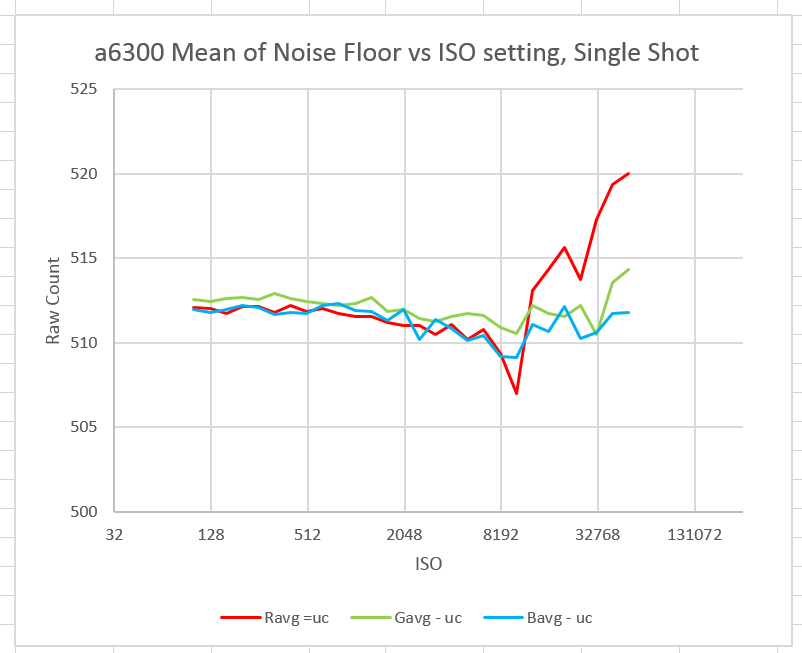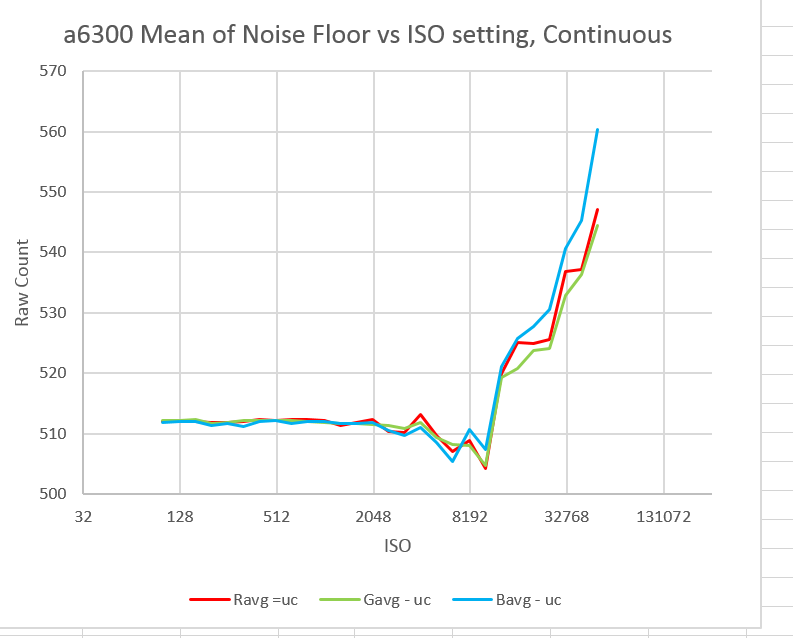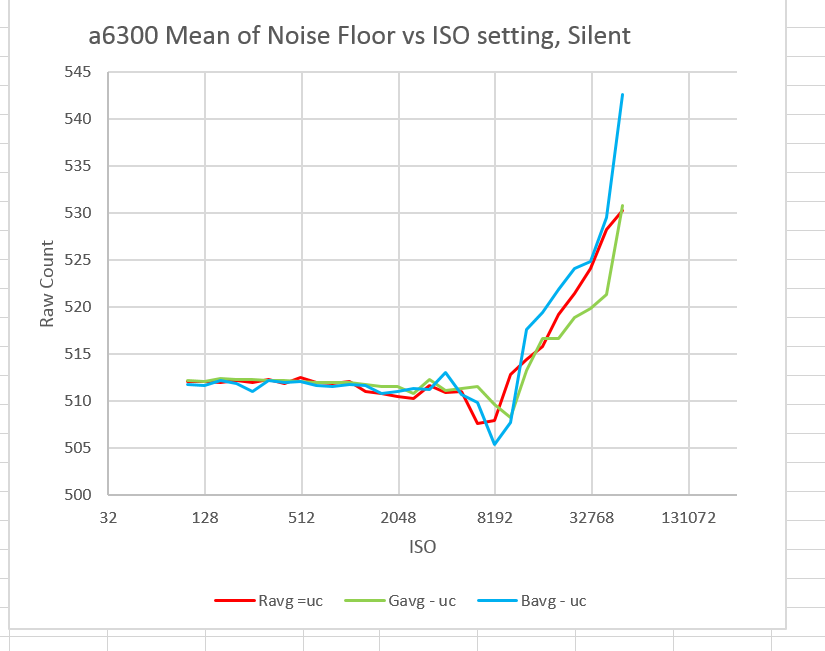This is part of a long series of posts about the Sony a6300. The series starts here.
We saw in the a7RII testing that the compressed raw files, but not the uncompressed ones, exhibited a slight shift in the black point at higher ISOs. In that camera, the shift was not independent of color plane, which means that shadows at high ISOs could have slight corner color casts. Since I already had all the captures that I needed to check out whether or not the a6300 does something similar, I prepared some graphs.
In single shot mode, we see a shift in the red channel. If not compensated for in the raw developer, this could produce some color shifts in the shadows.
Up until the very highest ISO setting, the other two shutter modes don’t seem to have this problem.
JIm



I need to be honest, the majority of what you are saying is above my level of technical understanding. I do have a question. How would you compare the noise handling at around 6400 Ido to that of the A7s?
Does shift i red channel also happens if say one take a photo at ISO 6400 in single shot mode and the boosts exposure in post or only when using ISO 8192 and higher in camera body?